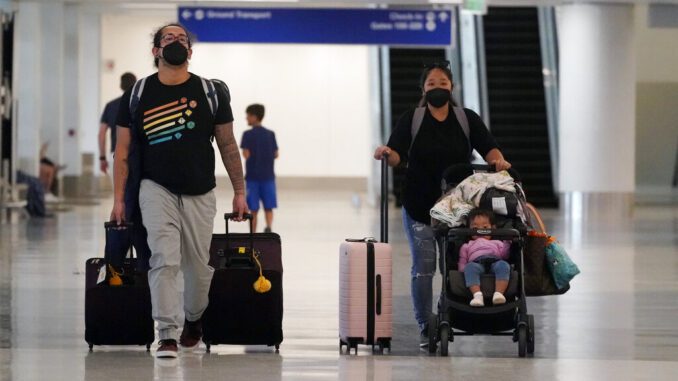
My family didn’t travel much when I was a kid, but when we did, my parents jumped through hoops to cut costs.
On a trip to Disney World, for example, our family of six switched hotels. Every. Night. My mom worked for a hotel chain and could get one free night per property.
Did my parents save money? Yes. Did it add to the mental burden of traveling with four kids? Absolutely.
As an adult now, planning a trip with my own child, I fully understand how expensive — and hard — it is to travel with kids. Planning and packing requires accounting for naps, snacks, tantrums and blowouts. And you’re budgeting for extra airfare, a bigger rental car and additional lodging.
You can save money on family travel and still have peace of mind. To find out how, I consulted two experts. Here’s what they had to say.
PAY WITH POINTS
The secret of savvy travelers? They don’t actually pay for airfare and lodging. Instead, they use rewards credit cards to turn everyday purchases into free flights and hotel rooms.
“Make your money work for you,” says Preethi Harbuck, a San Francisco Bay Area-based travel writer behind the blog Local Passport Family. Harbuck’s family of seven (soon to be eight) travels almost exclusively on credit card points. “There are more expenditures when you have kids but you can leverage those into greater benefits.”
Card hopping can net you major points thanks to signup bonuses but can be hard to manage, says Jamie Harper, mother of four and author of the travel blog Fly by the Seat of Our Pants. To keep things manageable, stick to one or two primary cards.
Harper and her husband rotate between Hyatt, Marriott and Hilton cards, which offer perks like free breakfast, Wi-Fi and anniversary nights.
PACK LIGHT — AND SMART
Overpacking can be a disaster on multiple fronts. First, you have to lug all that stuff with you and keep track of it along the way. The odds of a lost blankie are high.
Second, checked bags are expensive — around $30 to $35 per bag, each way.
Harbuck and her family stick to either one checked bag or a few smaller carry-ons. Rather than a fresh outfit for each person, each day, they rewear outfits and typically do laundry on each trip.
“Pack clothing that’s lightweight, packs up well and dries quickly,” she says, noting that wool items are great for colder weather.
Having layers is crucial, too. Skimp on this and you may wind up spending $50 per kid on souvenir sweatshirts to keep them warm, Harper says.
CHOOSE ACTIVITIES MINDFULLY
Pack your itinerary with free things to do, like local parks, hikes, beaches or free museums.
You can also tap into perks included with memberships you already have — to your local zoo or children’s museum — or invest in passes that you can use again and again.
When you do pay for experiences and excursions, consider your family’s life stage. Rather than taking your toddler to an art museum, for example, opt for an outdoor sculpture garden where they can run around or a museum tailored toward children with plenty of interactive features at their level.
Your family’s travel priorities should also guide you, Harbuck says. Learning about a place’s culture and history is important for her family, so they spend money on activities that achieve that goal and skip more popular tourist attractions.
“We’ve been to London several times but have never ridden the London Eye,” she says. “It doesn’t help me feel connected to the culture, and it’s super expensive.”
PACK SNACKS, GROCERY SHOP
There’s no rule that says you have to dine out for every meal when you’re on vacation.
Instead, pick one meal a day to eat out. Lunch is a good option, as it’s typically cheaper than dinner (which in some countries starts later than most kids’ bedtimes). By packing your supper or eating at home, you avoid an overpriced meal where children are either melting down or asleep at the table.
Harbuck’s family hits up local markets to stock up on food when they land in a new city. Taking a road trip? Keep a cooler with food for rest-stop picnics.
“If we don’t eat out twice, we’re saving $100 a day — and that’s the cheapest possible meal,” Harper says, noting her kids are picky eaters. “We spent $7 per kid on buttered pasta once. It was the worst experience ever. They didn’t even eat it.”
